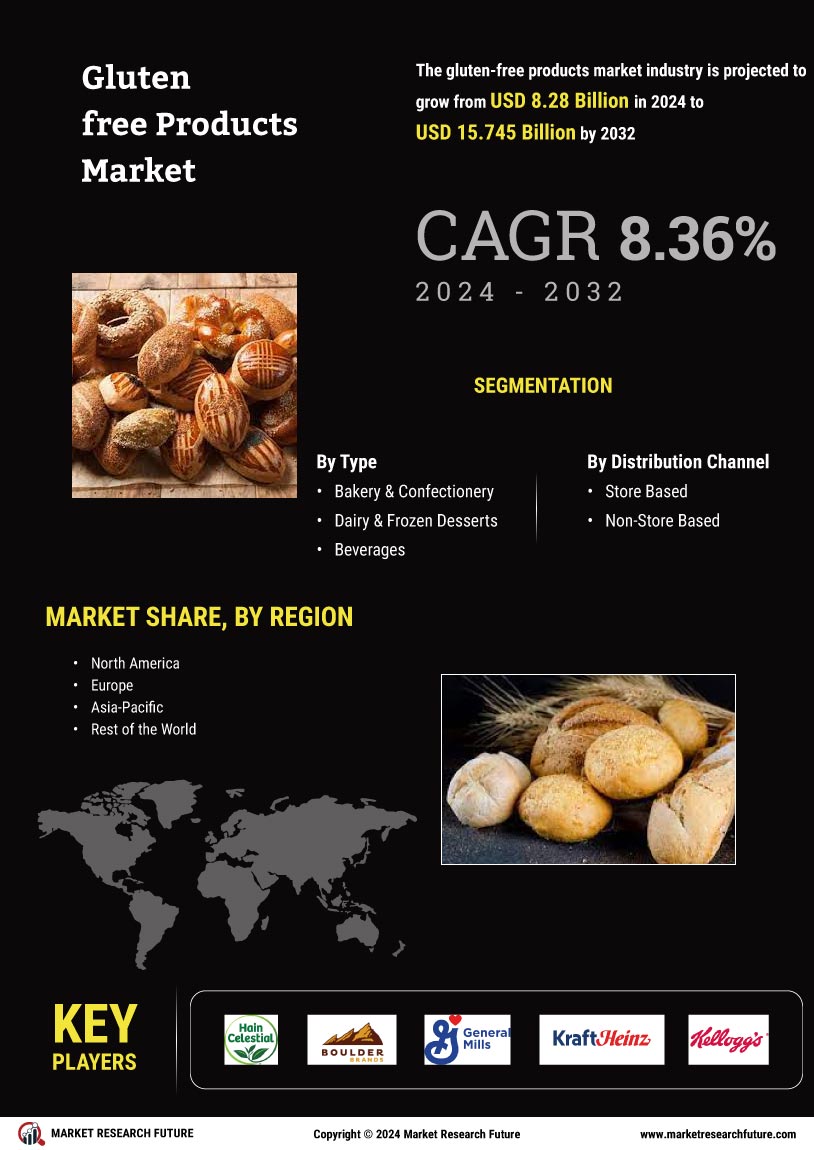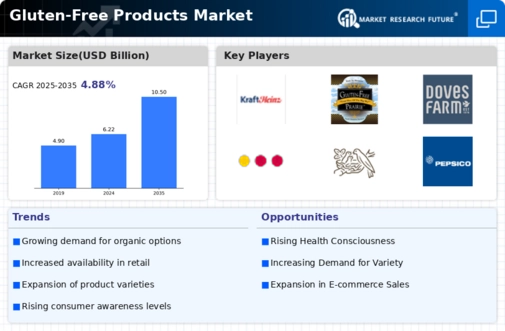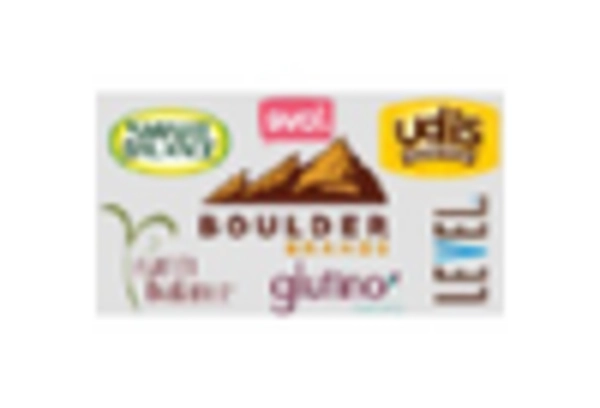Rising Incidence of Celiac Disease
The increasing prevalence of celiac disease is a notable driver for the Gluten-Free Products Market. As awareness of this autoimmune disorder grows, more individuals are seeking gluten-free options to manage their health. According to health organizations, the incidence of celiac disease has been rising, with estimates suggesting that approximately 1 in 100 people are affected. This growing awareness has led to a surge in demand for gluten-free products, as consumers become more educated about their dietary needs. Consequently, manufacturers are expanding their gluten-free offerings to cater to this demographic, thereby propelling the Gluten-Free Products Market forward. The focus on health and wellness continues to shape consumer preferences, making gluten-free options increasingly mainstream.
Growing Trend of Clean Label Products
The clean label movement is significantly impacting the Gluten-Free Products Market. Consumers are increasingly seeking transparency in food labeling, favoring products that are free from artificial ingredients and additives. This trend aligns with the gluten-free movement, as many gluten-free products are perceived as healthier and more natural. Research indicates that a substantial percentage of consumers are willing to pay a premium for clean label products, which has prompted manufacturers to reformulate existing products and develop new gluten-free options that meet these criteria. The intersection of clean labeling and gluten-free offerings is likely to enhance the appeal of gluten-free products, further driving growth in the Gluten-Free Products Market.
Increased Availability of Gluten-Free Products
The expansion of gluten-free product availability is a significant factor influencing the Gluten-Free Products Market. Retailers and food service providers are increasingly recognizing the demand for gluten-free options, leading to a broader range of products on shelves. Data indicates that the number of gluten-free products has increased substantially over the past few years, with many supermarkets dedicating entire aisles to gluten-free items. This enhanced accessibility not only benefits those with dietary restrictions but also attracts health-conscious consumers who perceive gluten-free products as healthier alternatives. As a result, the Gluten-Free Products Market is experiencing robust growth, driven by the increasing presence of gluten-free options in both retail and online platforms.
Influence of Dietary Trends and Lifestyle Changes
The rise of various dietary trends, such as paleo and keto, is influencing the Gluten-Free Products Market. These diets often emphasize the elimination of gluten-containing grains, leading to increased interest in gluten-free alternatives. As consumers adopt these lifestyle changes, they are more inclined to explore gluten-free products, viewing them as compatible with their dietary goals. Market data suggests that the gluten-free segment is expanding as more individuals seek to align their food choices with their health objectives. This shift in consumer behavior is likely to sustain the growth of the Gluten-Free Products Market, as manufacturers respond by innovating and diversifying their gluten-free offerings.
Increased Awareness of Food Allergies and Intolerances
The heightened awareness of food allergies and intolerances is a crucial driver for the Gluten-Free Products Market. As more individuals become aware of their dietary restrictions, the demand for gluten-free products continues to rise. Educational campaigns and advocacy from health organizations have played a pivotal role in informing consumers about the potential health risks associated with gluten consumption. This awareness has led to a more significant number of people actively seeking gluten-free options, not only for health reasons but also for lifestyle choices. Consequently, the Gluten-Free Products Market is witnessing a surge in product development and marketing efforts aimed at this growing consumer base.


















Leave a Comment